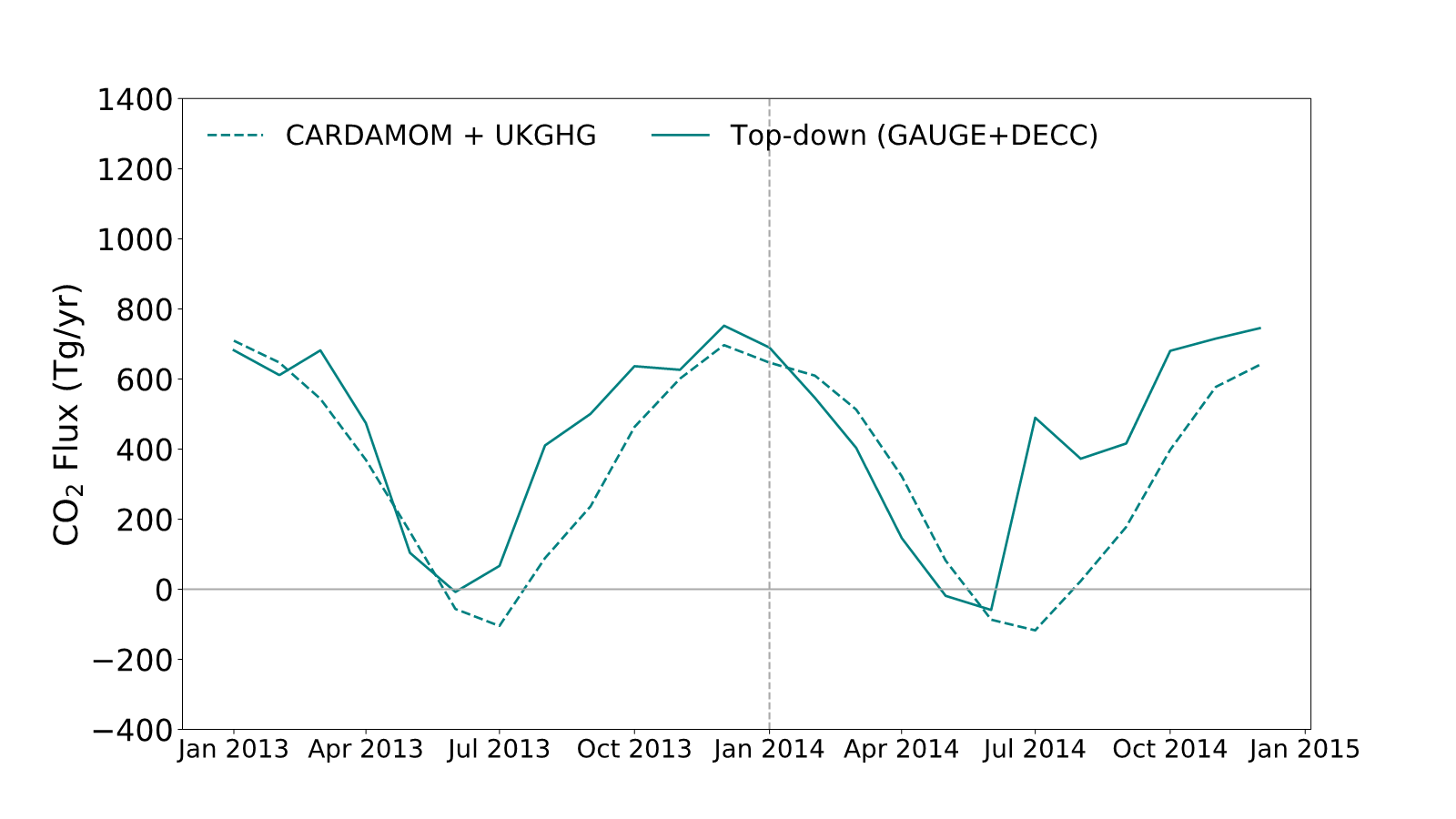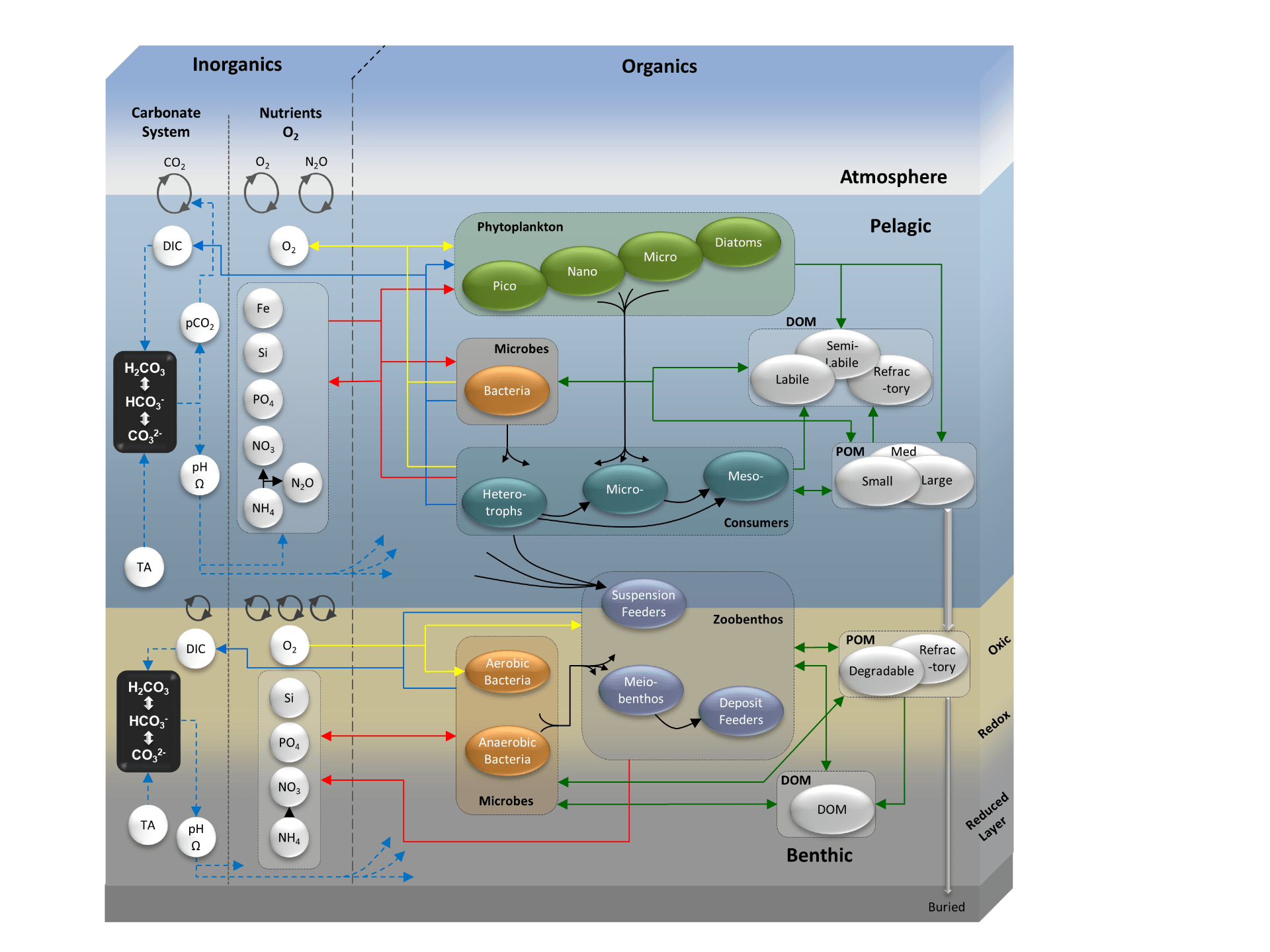Bottom-up flux estimation
The current state-of-the-art in bottom-up flux estimation for the UK is encapsulated in the CEH “UKGHG” model, which uses information from the government-funded annual UK National Atmospheric Emissions Inventory (NAEI) and other sources to produce temporally (hourly) and spatially (1 km) resolved fluxes across the UK land surface. This model provides the most direct means of relating atmospheric data to the national inventory by accounting for temporal and spatial variations and uncertainties. For terrestrial biospheric fluxes, a sophisticated carbon cycle data assimilation and modelling framework is used (CARDAMOM, Bloom and Williams, 2015).

Credit: Bloom and Williams, 2015
Coastal ocean fluxes are estimated using the coupled physical oceanographic-biogeochemical model NEMO-ERSEM (Butenschön, et al., 2016 and Graham et al., 2018). Our previous work has shown good agreement between top-down net national total CO2 fluxes and those estimated by CARDAMOM and UKGHG in the winter and spring months, but poor agreement in the summer and autumn (image below). To explore and reduce these differences, our work will focus on developments to these models that will: a) ensure that fluxes can be calculated on spatial and temporal scales that are relevant for input to the current generation of atmospheric models, and improve model outputs at these scales (~1km, hourly for the whole of the UK, Ireland and surrounding seas); b) utilise new information and datasets that can improve the representation of certain natural and anthropogenic processes; c) predict fluxes of gases that are co-emitted with GHGs.


Credit: Modified from Butenschön et al., 2016 and Plymouth Marine Laboratory
References
Bloom and Williams, 2015, The decadal state of the terrestrial carbon cycle: Global retrievals of terrestrial carbon allocation, pools, and residence times. Biogeosci., 12, 1299-1315
Butenschön, et al., 2016. ERSEM 15.06: a generic model for marine biogeochemistry and the ecosystem dynamics of the lower trophic levels. Geosci. Model Dev. 9:1293-1339.
Graham et al., 2018, A new high resolution NEMO configuration for operational simulation of the European North West Shelf, Geosci. Model Dev. 11, 681-696.
White et al., Quantifying the UK’s Carbon Dioxide Flux: An atmospheric inverse modelling approach using a regional measurement network, Atmos. Chem. Phys. Discuss., https://doi.org/10.5194/acp-2018-839, in review, 2018.
